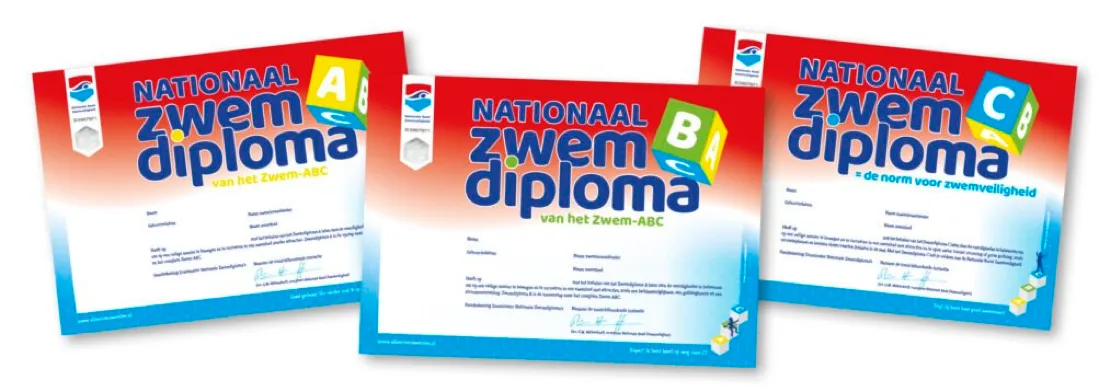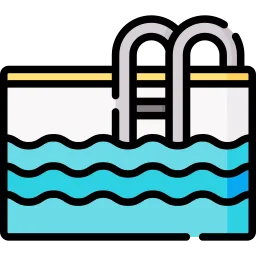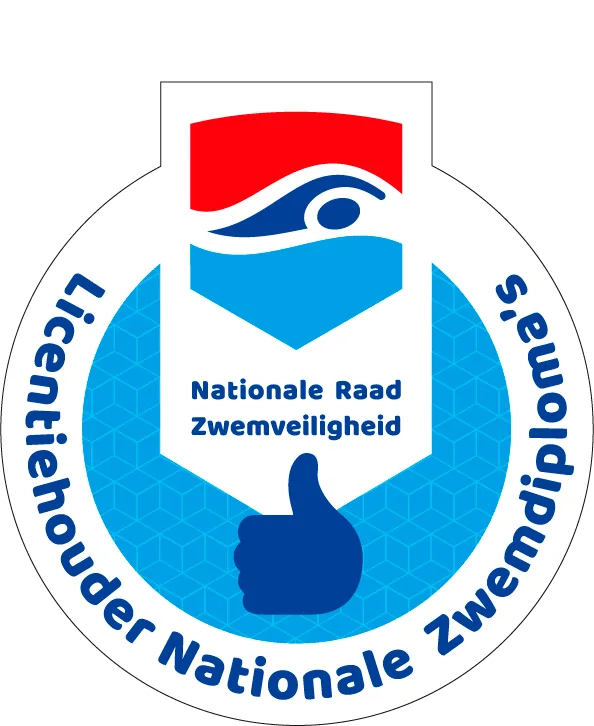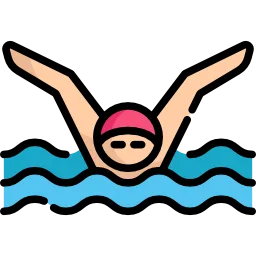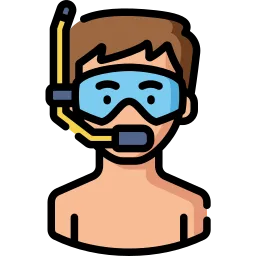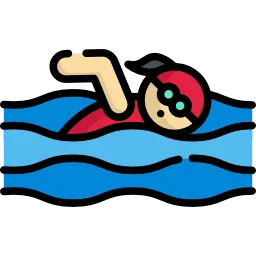Clothing
• Swimwear
• Shirt, blouse, or long-sleeved top
• Long trousers (skin-tight pants are not allowed)
• Shoes (plastic, leather, and sports shoes are allowed; shoes without a real sole are not permitted).
• Candidates are allowed to wear a long-sleeved dress or skirt/blouse combination instead of trousers/blouse. The dress/skirt should reach below the knee.
Requirements
SWIMMING FULLY CLOTHED
• Perform a forward jump from the starting block (completely submerge underwater), then tread water, and use a (brought or thrown) plastic bag as a buoyancy aid to float for 30 seconds. Next, submerge underwater, empty the plastic bag, resurface, refill it with air, and float for another 30 seconds. Conclude the test by independently climbing out of the water onto the poolside.
• Perform a somersault dive from the starting block and swim underwater through a hole in a vertically hung sail positioned 9 meters from the pool's edge. Then (without resurfacing) touch a pylon located 15 meters from the starting side. Next, swim 25 meters breaststroke, interrupted by performing two forward somersaults and two backward somersaults. Afterward, swim 50 meters elementary backstroke, interrupted by performing the following elements: a surface dive, swimming through a gate underwater, executing a half-turn around the longitudinal axis to a back position and resurfacing. Conclude the test by independently climbing out of the water onto the poolside.
• In pairs. From the poolside, perform a squat jump into the water with a flexible beam or kickboard in hand, and the participant in the water, who is at least 10 meters from the edge, grasps the flexible beam or kickboard and is pulled back to the edge in a supine position.
IN SWIMWEAR
• Perform a jump of their choice from the starting block and swim 200 meters breaststroke, incorporating at least 3 turns used in competitive swimming.
• Start in the water (hands on the bar) and swim 75 meters compound backstroke.
• Perform a dive start from the water's edge and swim 75 meters freestyle, incorporating at least 1 tumble turn.
• Start in the water (hands on the bar) with a competitive start and swim 75 meters backstroke, incorporating at least 1 turn used in competitive swimming.
• Perform a dive start from the water's edge and swim 15 meters butterfly.
• Perform a jump of their choice, swim a few strokes of breaststroke, then perform a surface dive and subsequently lift a hoop (horizontally positioned on the pool bottom, at least 2 meters deep) off the pool floor, swim through it underwater, and resurface.
• In a supine position in the water, perform 5 meters of sculling towards the head, followed by a backward somersault in a crouched position.
• Start in the water and swim 10 meters water polo crawl with a ball while two participants swim side by side, passing the ball to each other twice.
• Tread water unevenly for 30 seconds and pass the ball at least 3 times from one hand to the other, well above the water surface.
